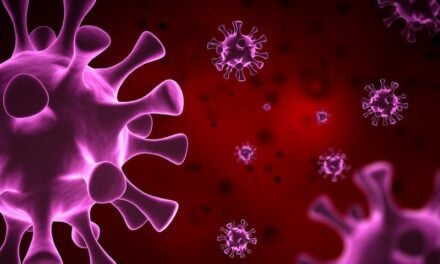Scientists in clinical research laboratories can benefit from a new differential ion mobility interface from Waltham, Mass.-based Thermo Scientific that increases productivity and data quality for qualitative and quantitative workflows.
The Thermo Scientific FAIMS Pro Duo interface builds upon the foundation of the Thermo Scientific FAIMS Pro interface to continue to support biological mass spectrometry (MS) and extend differential ion mobility to a broader range of applications including proteomics, plasma profiling, and targeted small-molecule quantitation. The new interface enhances signal-to-noise ratios and expands sample coverage, allowing users to explore complex samples with reduced matrix interference, and increase the breadth and depth of their analysis. Additionally, optimal performance across a wide range of chromatographic flow rates (100 nL/min to 1 mL/min) allows scientists to push the research boundaries in areas such as proteome coverage, quantitative analysis, and more recently, glycoproteomics, single-cell proteomics, and structural biology. By eliminating sample preparation steps and simplifying calibration, workflow efficiency is increased, meeting the needs of high-throughput laboratories.
“Many current workflows require labor-intensive and time-consuming sample preparation to provide the necessary level of selectivity for meaningful results, impeding sample throughput,” says Iain Mylchreest, vice president, research and development, analytical instruments, Thermo Fisher Scientific. “The FAIMS Pro Duo interface enhances orthogonal selectivity and suppresses matrix interference to increase workflow productivity, even for complex samples, allowing researchers to focus on answering scientific questions and driving discovery forward.”
Professor Jun Qu, department of pharmaceutical sciences, State University of New York (SUNY) Buffalo and chief scientist in bioanalysis, New York Center of Excellence in Bioinformatics and Life Sciences, says, “Contrary to common beliefs, the primary factor limiting the sensitivity of liquid chromatography (LC)-MS or LC-MS/MS targeted protein quantitation is the high interference rooted from numerous peptides in highly complicated digested samples, rather than MS signal strength. In this regard, the FAIMS Pro Duo interface provides orthogonal selectivity to effectively separate the target from chemical noise with high reproducibility and robustness. When coupled to trapping micro-LC-MS, it dramatically improves quantitative sensitivity – achieving an amazing 1-5 ng/mL limit of quantitation for large mAb molecules in plasma/tissue, without using antibody enrichment. Such a sensitive, high-throughput technique will make a significant impact on LC-MS based analyses of protein drugs and biomarkers for pharmacokinetic studies.”
The FAIMS Pro Duo interface easily integrates with Thermo Fisher’s next-generation mass spectrometers, including the Thermo Scientific Orbitrap Tribrid mass spectrometers, Thermo Scientific Orbitrap Exploris mass spectrometers, Thermo Scientific TSQ Altis triple quadrupole mass spectrometer and Thermo Scientific TSQ Quantis triple quadrupole mass spectrometer.
Featured image: Thermo Scientific Orbitrap Exploris GC 240 MS (Courtesy: Thermo Fisher Scientific)





